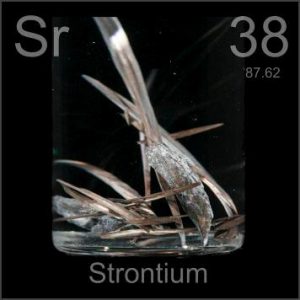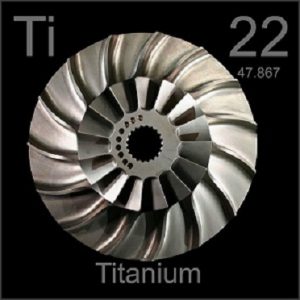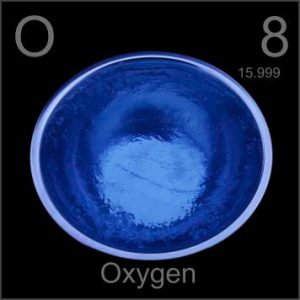| Catalog No. | VD0728 |
|---|---|
| Material | Strontium Titanate (SrTiO3) |
| Purity | 99.9% |
| Shape | Powder/ Granule/ Custom-made |
Strontium titanate evaporation material from Stanford Advanced Materials is an oxide evaporation material with the chemical formula SrTiO3.
 Strontium is a chemical element that originated in Strontian, a small town in Scotland. It was first mentioned in 1787 and observed by W. Cruikshank. The isolation was later accomplished and announced by H. Davy. “Sr” is the canonical chemical symbol of strontium. Its atomic number in the periodic table of elements is 38 with a location at Period 5 and Group 2, belonging to the s-block. The relative atomic mass of strontium is 87.62(1) Dalton, the number in the brackets indicating the uncertainty. Related Product: Strontium (Sr) Evaporation Materials
Strontium is a chemical element that originated in Strontian, a small town in Scotland. It was first mentioned in 1787 and observed by W. Cruikshank. The isolation was later accomplished and announced by H. Davy. “Sr” is the canonical chemical symbol of strontium. Its atomic number in the periodic table of elements is 38 with a location at Period 5 and Group 2, belonging to the s-block. The relative atomic mass of strontium is 87.62(1) Dalton, the number in the brackets indicating the uncertainty. Related Product: Strontium (Sr) Evaporation Materials
 Titanium is a chemical element that originated from Titans, the sons of the Earth goddess of Greek mythology. It was first mentioned in 1791 and observed by W. Gregor. The isolation was later accomplished and announced by J. Berzelius. “Ti” is the canonical chemical symbol of titanium. Its atomic number in the periodic table of elements is 22 with a location at Period 4 and Group 4, belonging to the d-block. The relative atomic mass of titanium is 47.867(1) Dalton, the number in the brackets indicating the uncertainty. Related Product: Titanium (Ti) Evaporation Materials
Titanium is a chemical element that originated from Titans, the sons of the Earth goddess of Greek mythology. It was first mentioned in 1791 and observed by W. Gregor. The isolation was later accomplished and announced by J. Berzelius. “Ti” is the canonical chemical symbol of titanium. Its atomic number in the periodic table of elements is 22 with a location at Period 4 and Group 4, belonging to the d-block. The relative atomic mass of titanium is 47.867(1) Dalton, the number in the brackets indicating the uncertainty. Related Product: Titanium (Ti) Evaporation Materials
 Oxygen is a chemical element that originated from the Greek ‘oxy’ and ‘genes’ meaning acid-forming. It was first mentioned in 1771 and observed by W. Scheele. The isolation was later accomplished and announced by W. Scheele. “O” is the canonical chemical symbol of oxygen. Its atomic number in the periodic table of elements is 8 with a location in Period 2 and Group 16, belonging to the p-block. The relative atomic mass of oxygen is 15.9994(3) Dalton, the number in the brackets indicating the uncertainty. Related Product: Oxide Ceramic Evaporation Materials
Oxygen is a chemical element that originated from the Greek ‘oxy’ and ‘genes’ meaning acid-forming. It was first mentioned in 1771 and observed by W. Scheele. The isolation was later accomplished and announced by W. Scheele. “O” is the canonical chemical symbol of oxygen. Its atomic number in the periodic table of elements is 8 with a location in Period 2 and Group 16, belonging to the p-block. The relative atomic mass of oxygen is 15.9994(3) Dalton, the number in the brackets indicating the uncertainty. Related Product: Oxide Ceramic Evaporation Materials
| Material Type | Strontium Titanate |
| Symbol | SrTiO3 |
| Color/Appearance | White, opaque crystals |
| Melting Point | 2,080 °C |
| Theoretical Density | 5.11 g/cm3 |
| Purity | 99.9% |
| Shape | Powder/ Pellets/ Granule/ Custom-made |
Strontium titanate evaporation materials are used in the following applications:
Our strontium titanate evaporation materials are carefully handled to prevent damage during storage and transportation and to preserve the quality of our products in their original condition.
Stanford Advanced Materials supplies various high purity materials, evaporation sources, and crucible liners for both thermal and E-beam evaporation. The evaporation materials include pure metals and alloys, oxides ceramics including rare earth oxides, such as Sc2O3, Y2O3, La2O3 and other ceramics, such as fluorides, nitrides, etc.
High purity strontium titanate evaporation materials play important role in deposition processes to ensure high-quality deposited film. SAM specializes in producing up to 99.999% high purity evaporation materials using quality assurance processes to guarantee product reliability.
Submit your review | |
1 2 3 4 5 | |
Submit Cancel | |